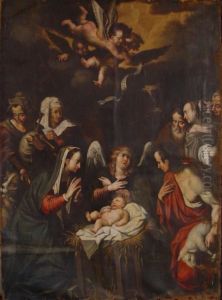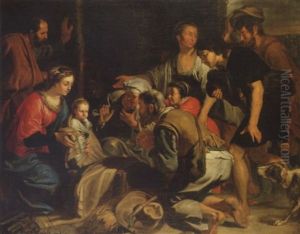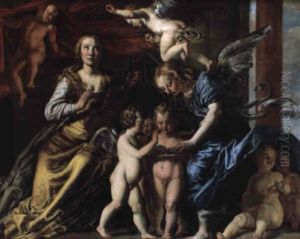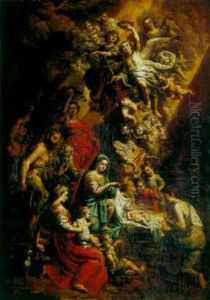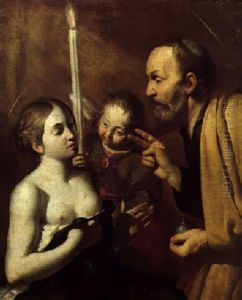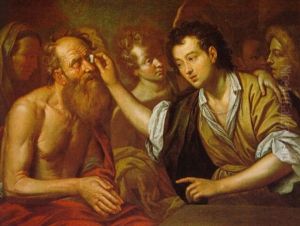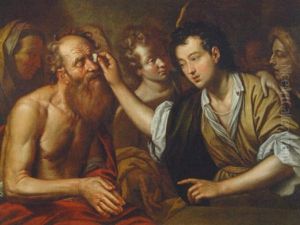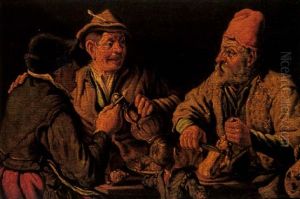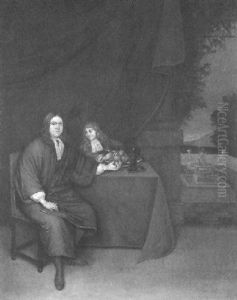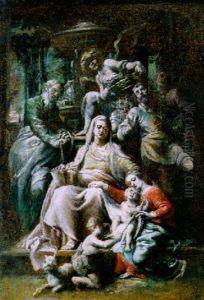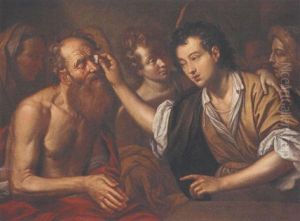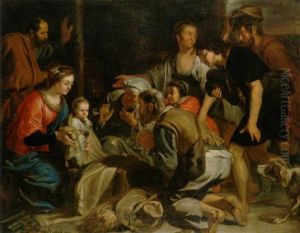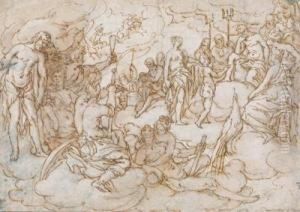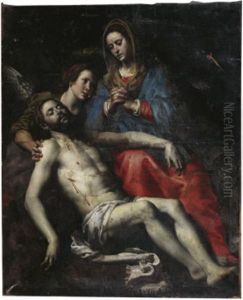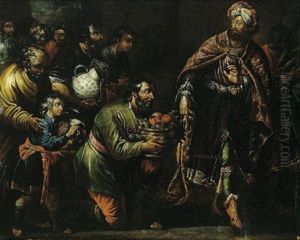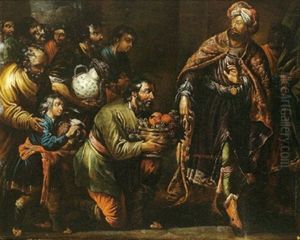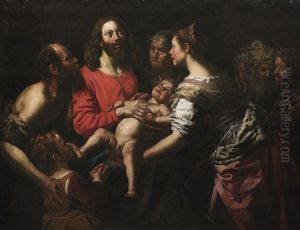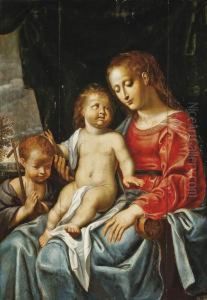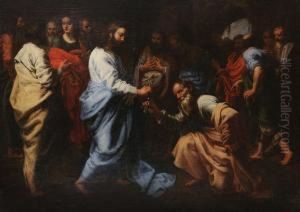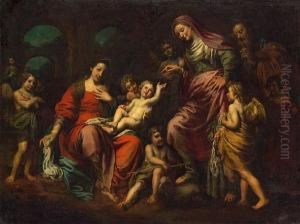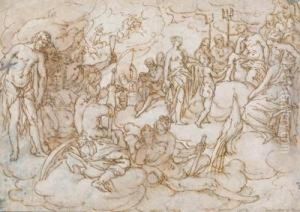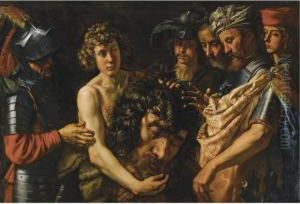Theodor Van Loon Paintings
Theodor Van Loon was a Flemish Baroque painter and one of the first artists to introduce the early Italian Baroque style to the Southern Netherlands. Born in Erkelenz around 1581 or 1582, Van Loon traveled to Italy early in his life, which had a profound influence on his artistic development. He was particularly affected by the works of Caravaggio and the Bolognese School, whose styles he sought to integrate with the Flemish painting tradition.
Van Loon was active primarily in Brussels and was instrumental in the spread of the Counter-Reformation style, which was characterized by dramatic intensity, strong chiaroscuro, and emotional realism. His paintings often featured religious themes, and he received commissions from several religious institutions. Among his most notable works are the altarpieces he created for the Abbey of 't Park in Leuven, which reveal his talent for combining robust figures with a vivid depiction of space and light.
Despite his significant contributions to Flemish art, Van Loon did not establish a large workshop or a lasting school of followers, which may be why his work was somewhat overshadowed by his contemporaries, such as Peter Paul Rubens. Nevertheless, his art was appreciated in his time, and he was commissioned by the Archdukes Albert and Isabella, who were then the sovereigns of the Spanish Netherlands.
Theodor Van Loon's career also included a period of collaboration with other artists, such as the landscape painter Jan Brueghel the Elder. He was a member of the Brussels Guild of St. Luke and served as its dean in 1628. His work gradually fell into obscurity after his death in 1649, but in recent years, there has been a renewed interest in his oeuvre, leading to a reassessment of his place in the history of Flemish art.
